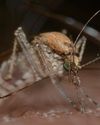Myths and Facts of Nanotechnology: Science Operating at Nanoscale
Scientific India
|November - December 2019
Nanotechnology is the current edge technology which encompasses science, engineering, and technology at the nanoscale. Nanotechnology involves the use of materials which are in the size range of 1 to 100 nanometers (nm).
-

Rodshaped materials who selength ranges in micrometers but diameter is in the range of 1-100 nanometer can also be considered as nanomaterials. What is nanometer or how small is that? A nanometer is one-billionth of a meter (A meter is 39.37 inches, or slightly longer than one yard). The prefix “nano” means “one billionth”, or 10-9, in the international system for units of weights and measures. The abbreviation for nanometer is "nm." A nanometer is one-billionth of a meter and if we compare with the diameter of human hair, it is about 50,000 times thick than diameter of nanometer. Let's suppose we have a sheet of paper which is already very less in thickness and if we divide this thickness by nanometers then it will be about 100,000 nanometers thick. Depending on the shape, the application, or the components, nanomaterials may be called by a variety of different names, including nanoparticles, nanotubes, nanofilms, nanoshells, nanospheres, nanowires, nanoclays, nano-polymers, and much more. There is exponentially increase in the surface area of nanomaterials during synthesis from bulk materials which makes these materials highly reactive and gain novel properties. Because of very small size nanomaterials can behave differently, for example, a material's melting point, color, strength, chemical reactivity, and more may change at the nanoscale.
Types of Nanomaterials
Nanomaterials are present in the environment since the history of earth and are produced by many natural activities. Nanoscale materials have been used for over a thousand years. For example, nanoscale gold was used in stained glass in Medieval Europe and nanotubes were found in blades of swords made in Damascus. Nanomaterials are produced by both natural and anthropogenic/manmade activities.
This story is from the November - December 2019 edition of Scientific India.
Subscribe to Magzter GOLD to access thousands of curated premium stories, and 10,000+ magazines and newspapers.
Already a subscriber? Sign In
MORE STORIES FROM Scientific India
Scientific India
Japanese physicists were the first to measure the most tolerant entanglement state, the W state
There are many unusual things that happen in the world of quantum physics.
3 mins
September - October 2025

Scientific India
The Fifth Force: Could It Unlock the Secret of Dark Matter?
What if the universe is powered by a force we've never seen before? For centuries, science has explained nature with four fundamental forces.
3 mins
September - October 2025

Scientific India
A flu test you can chew
As flu season nears in the northern hemisphere, scientists are exploring a surprising new way to detect infection: through taste.
1 mins
September - October 2025

Scientific India
Lab-Grown Kidney Brings Artificial Organ Dream Closer to Reality
In a major leap toward bioengineered organ replacement, scientists have successfully grown human kidney 'assembloids' in the laboratory that mimic key structural and functional features of natural kidneys.
1 min
September - October 2025

Scientific India
Your pumpkin might be hiding a toxic secret
Pumpkins, squash, zucchini, and other members of the gourd family have a surprising trait: they can take up pollutants from the soil and store them in their edible parts.
1 mins
September - October 2025

Scientific India
2025 Nobel Prize in Physics Reveals Quantum Secrets in Superconducting Circuits
The 2025 Nobel Prize in Physics has been awarded to John Clarke, Michel H. Devoret, and John M. Martinis for their pioneering experiments that brought quantum mechanics from the invisible atomic world to the macroscopic scale a system large enough to hold in your hand.
1 mins
September - October 2025

Scientific India
Genomic Evidence Redefines the Evolutionary Age of Mosquitoes
A new genetic analysis has shaken up what we thought we knew about one of humanity's most notorious pests the mosquito.
1 min
September - October 2025

Scientific India
Nobel Prize in Chemistry 2025: Building Molecular Architectures with Room to Breathe
In a scientific breakthrough that bridges molecular design with planetary-scale problems, the 2025 Nobel Prize in Chemistry has been awarded to Susumu Kitagawa, Richard Robson, and Omar Yaghi.
1 mins
September - October 2025

Scientific India
Guardians of Immunity: Nobel Prize 2025 Honors Discoveries that Keep the Immune System in Check
The 2025 Nobel Prize in Physiology or Medicine has been awarded to Mary E. Brunkow, Fred Ramsdell, and Shimon Sakaguchi for their groundbreaking discoveries in the field of peripheral immune tolerance a crucial mechanism that prevents the body's immune system from turning against itself.
1 mins
September - October 2025

Scientific India
'Is cold nuclear fusion feasible?
In early May 1989, two chemists from the University of Utah, Pons and Fleischmann, arrived in Washington, U.S.A. The aim is to present their findings to members of the US Congress.
3 mins
September - October 2025
Translate
Change font size

